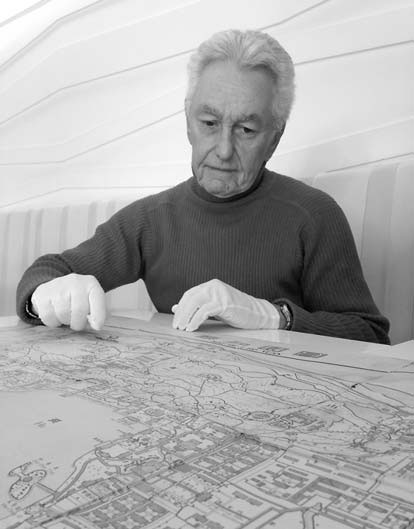How a pile put one man on the map
Updated: 2014-01-26 07:22
By Mike Peters(China Daily)
|
|||||||
As a dapper, silver-haired man rolls out one old map, then another, even untrained observers can see that some details are missing. And not small details. Where, for example, is the Pacific Ocean?
"It's hard for us to imagine now that maps made well after Magellan and others circumnavigated the world could look like this," Vince Ungvary says, chuckling. "But that's part of the story of antique maps: Who drew them, and why, is key to what you see."
For example, he says, cartography by Claudius Ptolemy (AD 90-168) showed that the Indian Ocean was landlocked more like a large lake. Because his records were the wisdom of the day well into the Renaissance, "the myth of the 'Indian lake' lived on long after maritime discoveries had refuted it," he says. "And Ptolemy didn't know anything about the Pacific Ocean."
Ungvary got interested in ancient maps by chance.
"I was visiting an old bookstore in New Delhi some years ago. After a good look around, I got curious about a pile of big yellow pages heaped on a table in the back."
"The clerk said, 'Oh, they're just old maps'."
Ungvary was transfixed by the pile and began leafing through it.
"I'd never seen a really old map before, except maybe reprinted in a textbook," he says. "As soon as I saw the odd geography and shapes, I was totally taken with them. The intricate images were oddly intimate - hand-drawn with a lot of details and decoration."
He bought a few, and was soon doing research about his new hobby.
"Some of the oldest maps we know about were produced in China," he recently told an expat group meeting in Beijing. "Ancient maps of Babylonia date from the 24th century BCE - Before the Common Era - and the next known are Chinese maps from the 4th century BCE."
Maps made by Chinese in ancient times had their own reasons for creation, he says. "They were made for a very select group - the emperor or the highest officials - for military, ideological and administrative reasons."
The ideology of a mapmaker comes into play anywhere, he says. Ungvary slips on a pair of white gloves and rolls out a 1790 Italian world map with Europe in the center - and a similarly dated example on which Asian cartographers gave China pride of place.
As a university student in Australia, Ungvary pursued Asian studies - "culture, history, politics, language - I learned Indonesian", he says with a grin. "I loved it all." As a post-graduate, he went into international marketing and later worked six years in Jakarta and then 11 in China, the last 10 of those in Shanghai. When cartography caught his eye, Asian maps became his specialty.
Six years ago, after collecting old maps for about 15 years, he quit his job with a global chemical company "because I realized I'd rather collect maps than do anything else". By then he had about 1,000 maps, and today he buys and sells constantly.
Since Ungvary travels back and forth between China and Australia, he hopes to see an important exhibition, Mapping Our World, that's currently at the National Library in Canberra until March 10. That institution has 600,000 maps of its own, comprising one of the largest collections in the world. And Ungvary says one-of-a-kind maps from its own vaults as well as other important collections will be on show.
It's not hard to find old maps in antique stores and bookshops even today, he says, though it takes a little time to learn what you're looking at. A key factor in the price: How many copies of a map were made.
Some of the rarest antique maps he's handled are Korean. "The ones you see here," he says, indicating a Power Point image, "are hand-drawn. They're one-offs, so they are as rare as any."
You'd be very lucky to find one of those lying around in a bookstore pile, he adds. "But there are some fascinating pieces to be had for a few hundred yuan."
|
Vince Ungvary examines a city map of Beijing from a century ago. Mike Peters / China Daily |
(China Daily 01/26/2014 page5)
